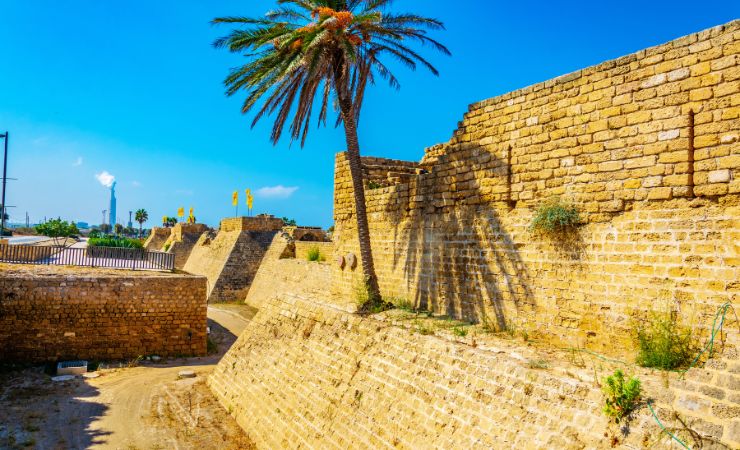Exploring Bet Guvrin’s Theater and Citadel: From Gladiators to Knights
Bet Guvrin, a site that played a major role in both Roman and medieval history, boasts a fascinating Roman amphitheater and a Crusader-era citadel.

Location
Bet Guvrin is part of the Maresha-Bet Guvrin National Park, located along Route 35 in the Judean lowlands, about an hour’s drive southwest of Jerusalem.
The History of Bet Guvrin
Bet Guvrin’s history stretches across several eras, making it a fascinating site that reveals layers of Israel’s past. Originally known as Eleutheropolis during the Roman era, Bet Guvrin rose in importance following the destruction of nearby Maresha around 40 BCE. By the 2nd century CE, it had become a Roman colony under Emperor Septimius Severus, signifying its significance within the Roman Empire. During this period, the city prospered, boasting impressive public buildings such as the Roman amphitheater, which held gladiatorial games for Roman soldiers stationed in the region. The amphitheater, built after the suppression of the Bar Kochba Revolt (132-135 CE), could seat around 3,500 people and remained in use until an earthquake in 363 CE caused significant damage
Though the Crusaders lost the fortress in 1187 to Saladin, their modifications remain visible today, offering insight into how successive powers built upon the foundations of their predecessors. After the Crusader period, the region transitioned under Islamic control, and the city, known as Bayt Jibrin, continued to be inhabited until modern times.




What Can be Found at Bet Guvrin?
Excavations led by Israeli archaeologist Amos Kloner in the late 20th century uncovered many of the site’s treasures, including the amphitheater, the citadel, and a Roman bathhouse:
A Roman Legacy: The Amphitheater
Bet Guvrin’s amphitheater was built after the Jewish War (68 CE) and is part of the Roman city of Eleutheropolis, which means “City of the Free.” This grand structure became a symbol of Roman power and culture, serving as a venue for public spectacles, games, and even brutal combat.
- Architecture: The amphitheater is an oval-shaped structure, typical of Roman design, with rows of stone seats surrounding a central arena. It once held up to 3,500 spectators. Visitors can walk through the tunnels that gladiators once used to enter the ring. Much of the seating and entranceways have been restored, allowing visitors to feel the atmosphere of Roman public life.
- Historical Role: Built during the reign of Emperor Septimius Severus (around 200 CE), the amphitheater was a tool of entertainment and bringing the empire’s cultural and political influence to its colonies. Public games, executions, and sports events were held here to remind the local population of Roman authority.
The Crusader Citadel
Centuries later, Bet Guvrin’s strategic location once again became a focal point, this time for the Crusaders. In the 12th century, during the Kingdom of Jerusalem, the Crusaders saw the site’s potential and constructed a citadel, using the remains of the Roman amphitheater and bathhouse as part of their defensive structure.
- Crusader Architecture: The Crusader citadel features thick stone walls, some of which still stand today, and remnants of the towers that once guarded the fortress. The citadel cleverly integrated Roman ruins, showing how the Crusaders repurposed existing structures. At the site, the remains of the defensive walls and even spot the traces of the adjacent Crusader church are highly visible.
- Roman bathhouse: Integrated into the Crusader citadel, showcasing both Roman public bathing culture and medieval fortification techniques.
- Defending the Lowlands: From this citadel, the Crusaders controlled a large portion of the Judean lowlands, crucial for trade and military defense. The fortress served as a stronghold during the turbulent battles between the Crusaders and Muslim forces.
Sources and Additional Information
Nearby Sites
- Columbarium Caves (Tel Maresha): Unique underground caves used for breeding pigeons during the Hellenistic period, with hundreds of niches carved into the rock.
- Bell Caves: A vast network of enormous limestone caves with stunning acoustics, used historically for quarrying.
- Sidonian Burial Caves: Painted burial chambers adorned with frescoes, featuring figures from mythology and vibrant animal motifs.
- Tel Maresha: An ancient city that offers a deeper dive into Israel’s biblical and Hellenistic history, located nearby within the national park.



